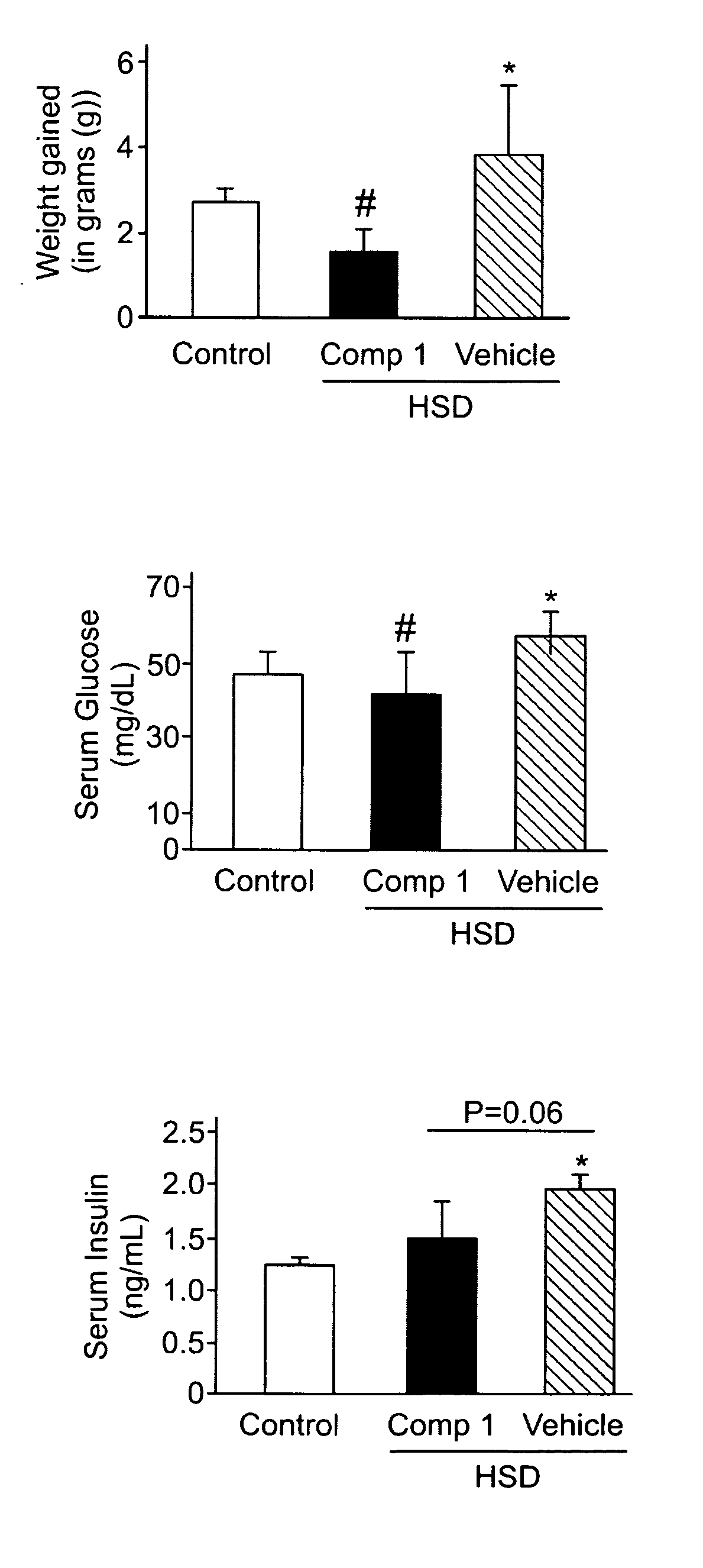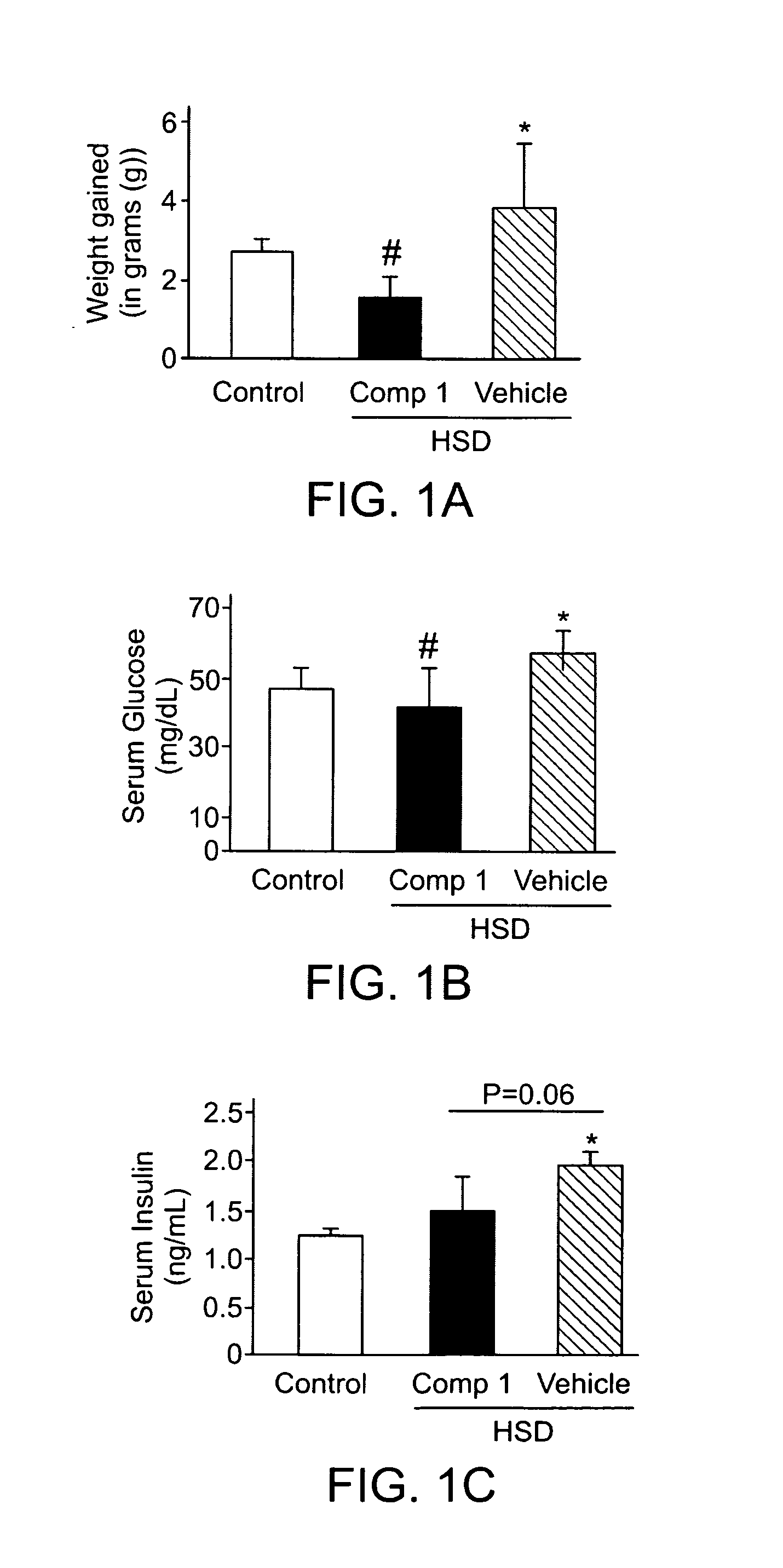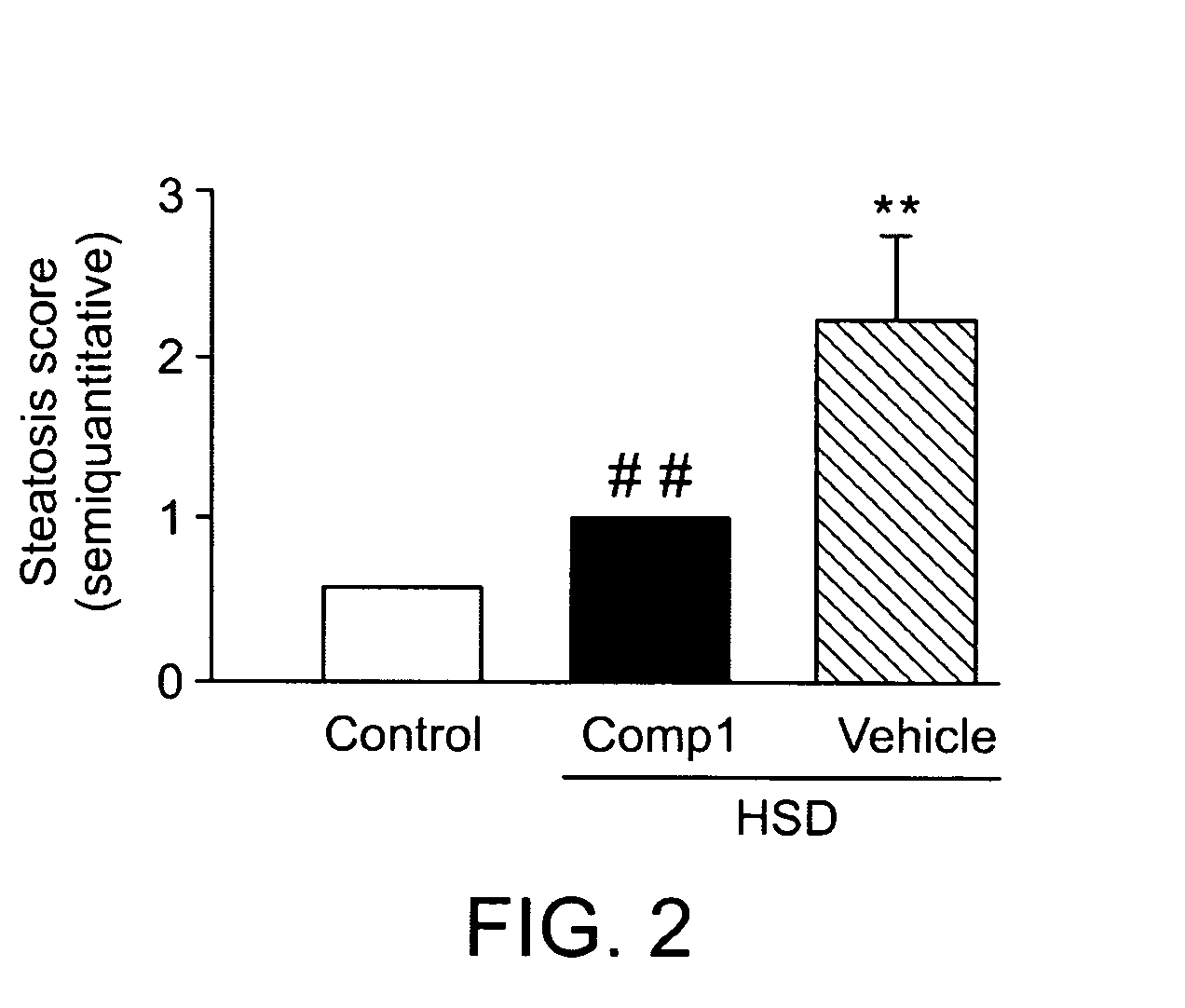Treatment for non-alcoholic-steatohepatitis
a technology for alcoholic steatohepatitis and treatment, applied in the direction of drug composition, anti-noxious agents, metabolic disorders, etc., can solve the problem of significant impairing of nash progression
- Summary
- Abstract
- Description
- Claims
- Application Information
AI Technical Summary
Benefits of technology
Problems solved by technology
Method used
Image
Examples
example 1
Inhibition of High Sucrose Diet Induced Obesity using Compound A
[0127]A significant weight gain was observed in vehicle treated mice after 4 weeks of HSD feeding compared to compound A treated mice and chow control animals (FIG. 1A). Vehicle treated mice exhibited higher fat accumulation in the abdominal cavity while animals that received compound A evidenced less amount of fat that was not significantly different compared to control chow mice which showed no macroscopical fat deposits.
example 2
Inhibition of High Sucrose Diet Induced Insulin Resistance using Compound A
[0128]Evidences of insulin resistance were observed in HSD / vehicle mice as blood glucose levels were significantly higher in this group compared to animals treated with either HSD / compound A or mice under chow diet (FIG. 1B). Accordingly, serum insulin levels were significantly higher in HSD / vehicle treated animals when compared to control animals while HSD / compound A mice exhibited roughly significantly less blood insulin that HSD / vehicle treated animals (p=0.06) (FIG. 1C).
example 3
Inhibition of High Sucrose Diet Induced NASH using Compound A
[0129]Haematoxylin and eosin (H&E) stainings on liver sections revealed profuse presence of fat droplets as well as caryorexis and apoptotic bodies in HSD / vehicle treated animals. Steatosis was numerically scored following semiquantitative pathological standards and was defined as micro- to mediovesicular steatosis (FIG. 2). HSD / compound A treated mice presented a liver histology similar to chow control animals with no clear evidence of fat accumulation (FIG. 2). Oil-Red-O staining confirmed the results of H&E analysis showing a high presence of fat deposits in livers from HSD / vehicle treated mice in the form of macro to mediovesicular steatosis while only minor microvesicular fat dropples could be observed in some of the HSD / compound A mice analysed. Chow diet fed mice exhibited a completely negative Oil-Red-O staining.
PUM
| Property | Measurement | Unit |
|---|---|---|
| Electrical resistance | aaaaa | aaaaa |
Abstract
Description
Claims
Application Information
 Login to View More
Login to View More - R&D
- Intellectual Property
- Life Sciences
- Materials
- Tech Scout
- Unparalleled Data Quality
- Higher Quality Content
- 60% Fewer Hallucinations
Browse by: Latest US Patents, China's latest patents, Technical Efficacy Thesaurus, Application Domain, Technology Topic, Popular Technical Reports.
© 2025 PatSnap. All rights reserved.Legal|Privacy policy|Modern Slavery Act Transparency Statement|Sitemap|About US| Contact US: help@patsnap.com



